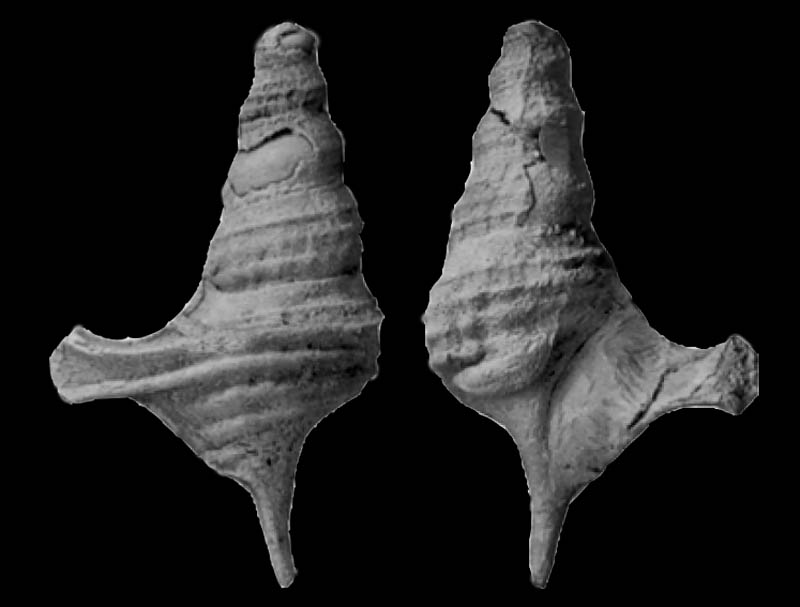Stromboidea
Original diagnosis:
- "Anchura with axial sculpture reduced to nodes and three to four spiral cords on spire whorls; lower two extend onto shank at wing."
Original Description of Anchura baptos by Elder & Saul, 1996, p. 394:
- "Shell moderately large, high-spired, drawn out anteriorly into a very narrow, moderately long, backwardly bent rostrum; pleural angle about 28 degrees; whorls angled medially, slightly concave posterior to middle and convex anteriorly; suture appressed. Sculpture on earliest preserved whorl of arcuate axial ribs and three strong spiral cords; medial cord strongest, forming the angulation, posterior cord weakest; axial ribs becoming weaker on more mature whorls, reduced to barely more than nodes on cords by penultimate whorl; ultimate whorl with six cords (three equally spaced, additional cords anterior to three of spire), anterior cord weakest; three cords of spire extended onto shank of wing; posterior cord meeting posterior edge near center of posterior sulcus; median cord forming keel of wing, and anterior cord forming secondary anterior angulation. Outer lip expanded to form wing with short shank. Aperture with broad posterior sulcus and broad anterior sulcus delineated posteriorly by parietal callus pad. Inner lip expanded onto whorl face, developing a spirally elongate, thick callus pad, thickest along fifth cord but overlapping onto fourth and sixth cords."
Locus typicus: East side of Dip Creek, Lime Mountain quadrangle, San Luis Obispo County, California, USA.
Stratum typicum: latest Maastrichtian, upper Cretaceous to early Danian, Paleocene
Etymology: The name baptos, Greek, dipped, dyed, refers to the type locality on Dip Creek.
Anchura baptos Elder & Saul, 1996, fig. 6 - 5, 6
References:

